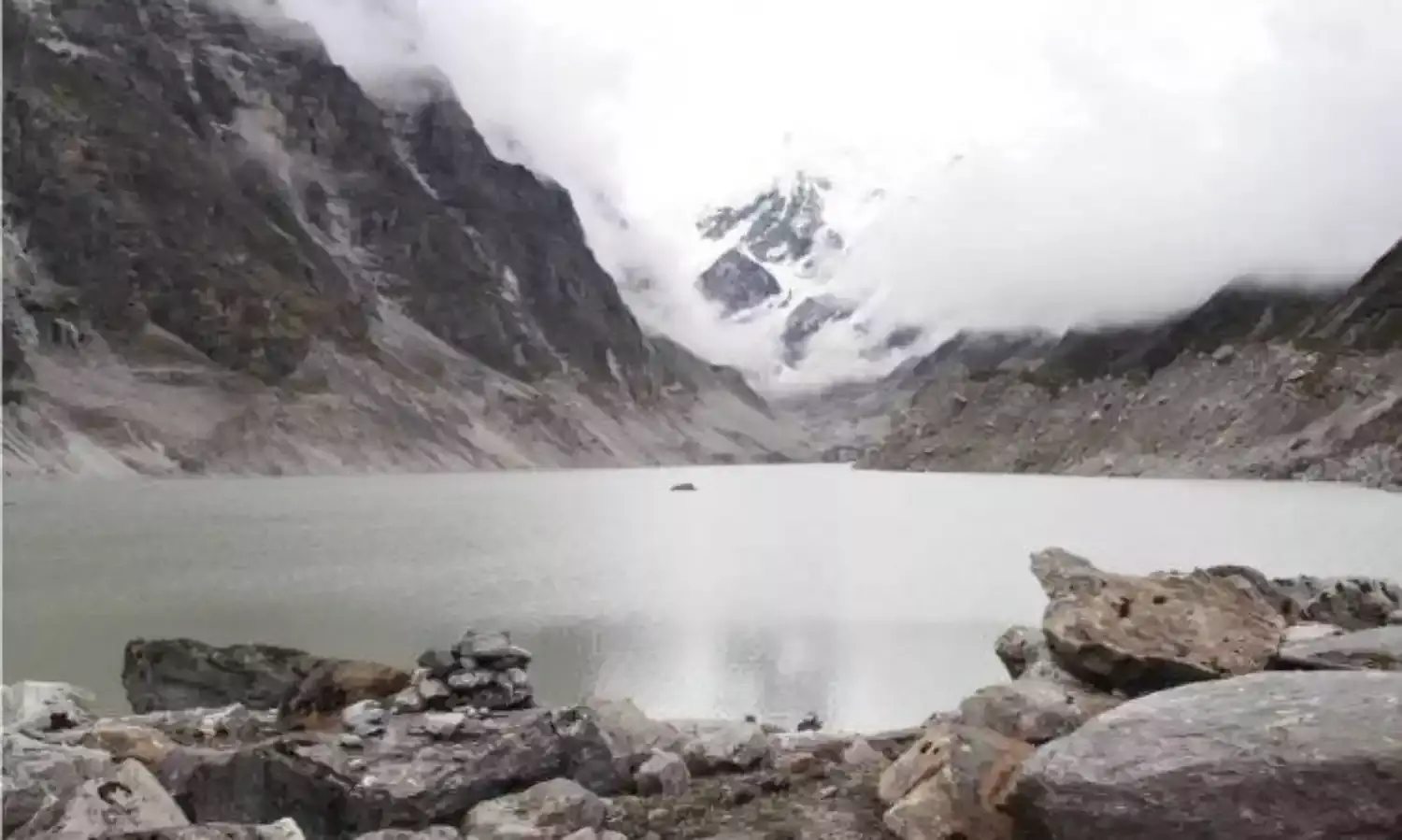Global Warming - Glacial Lakes in the Himalayas At Risk of Bursting
Mitigation measures taken only in two lakes;

KATHMANDU: A new report out this week warns that hundreds of glacial lakes in the Himalaya are in danger of bursting because global heating is melting the ice on the world’s highest mountains. However, on only two of them have there been mitigation measures to reduce water levels.
Those projects have been prohibitively expensive, and questions have been raised about their sustainability and whether they offer a long-term solution.
The water level of the Tso Rolpa glacial lake in the Rolwaling Valley was lowered 20 years ago after scientists warned that it was in imminent danger of bursting. The project cost $9 million at the time, most of it coming from The Netherlands.
Its sluice gate lowered the water level by only 3m, and scientists now say it needs to go down by a further 20m to reduce risk of it bursting. A network of early warning stations downstream also has not functioned as planned.
A sluice gate built 20 years ago reduced the level of the water by 3m, but it needs to go down by 20m to reduce the danger of a Glacial Lake Outburst Flood (GLOF). Credit: RASTRARAJ BHANDARI
The other project was a drainage channel and gate built on Imja Lake in the Mt Everest region in 2016 by the Nepal Army with support from the United Nations Development Programme (UNDP) and the Global Environment Facility (GEF) at a cost of $7.2 million.
The project located at 5,000m altitude was criticised at the time for being an expensive show-case on a popular tourist site near Mt Everest, and for wasting money on a lake that is relatively stable because it is buttressed by two side moraines of the Lhotse Nup and Nuptse Glaciers. Glacial lakes like Thulagi in Lamjung on the Hongu basin were said to be in much greater danger of bursting, and needed more urgent mitigation.
And it has emerged that four years after the project was completed and the water in Imja Lake lowered by 3.4m, the Nepal Army and its main contractor have yet to remove their excavators and other equipment from the site as per the contract — flouting guidelines of Sagarmatha National Park, which is a World Heritage Site.
Despite recent interventions by UNESCO and the national park, the Nepal Army has said it is technically not possible to take the equipment out because of altitude restrictions on its helicopters. The firm hired by the army, Krishna Construction, says its contract does not say anything about removal of equipment.
The Glacial Lake Inventory report launched at a webinar on Monday says that of the expanding glacial lakes in the Himalaya, 47 on the watersheds of Nepal’s three main rivers are at high risk of bursting, and causing catastrophic floods downstream. Of these, 42 lakes are on the Kosi River basin in eastern Nepal, three are on the Gandaki and two on the Karnali watersheds.
However, not all the lakes are located in Nepal. Of the 47 dangerous lakes, 25 are in Tibet and empty into rivers that flow down directly into Nepal. One of the high risk lakes is in Indian territory near Karnali.
This week’s report by the Kathmandu-based International Centre for Integrated Mountain Development (ICIMOD) and UNDP mapped 3,624 glacial lakes in the three river basins in Nepal, China and India, of which 2,070 are within Nepal’s boundaries. The other 1,509 are on the Tibetan Plateau in China and 45 are in India, but drain into Nepal.
The researchers evaluated the risk factors for the glacial lakes depending on the integrity of their moraine dams, topography of the surroundings and the risk of avalanche into the lakes, as well as downstream settlements and infrastructure and divided them into three categories.
Of the 47 dangerous lakes on the Kosi, Gandaki and Karnali basins, 31 were found to be at very high risk of bursting and causing damage. Twelve other lakes are at moderate risk and there are four lakes in the lower risk category.
The lakes are expanding because the ice fields feeding them are melting faster due to global heating, as well as increased deposition of soot particles on the snow. An ICIMOD assessment last year reported that even in the best case scenario, the Himalaya will lose one-third of its ice and snow during this century. But recent studies have shown that the melting is actually happening faster than previously thought, and is accelerating.
This has increased the number of glacial lakes in the Nepal Himalaya as well as their sizes. For example, remote sensing data in the report showed that there were 3,609 glacial lakes in Nepal’s three river basins with a combined area of 180sq km. By 2015, the number had grown to 3,696 and they covered a combined area of 195.4sq km.
Scientists have long noted that the rate of melting is higher in the eastern Himalaya than in the west, and the report confirms this. Interestingly, while the number of glacial lakes in the Kosi basin has gone down, their total area has increased by 14sq km – largely because supraglacial ponds have merged, or the lakes have drained without bursting.
The report has also recorded 26 glacial lake outburst flood (GLOF) events in the Nepal Himalaya since 1977, but only 14 of them were on lakes located in Nepal. This emphasises the importance of trans-boundary early warning system – especially on lakes in Tibet upstream on the two Bhote Kosi rivers, Tama Kosi, the Arun and others.
Cover Photograph: Tso Rolpa glacial lake at 4,580m has grown seven times in size in the past 60 years due to global heating. Credit: RASTRARAJ BHANDARI

